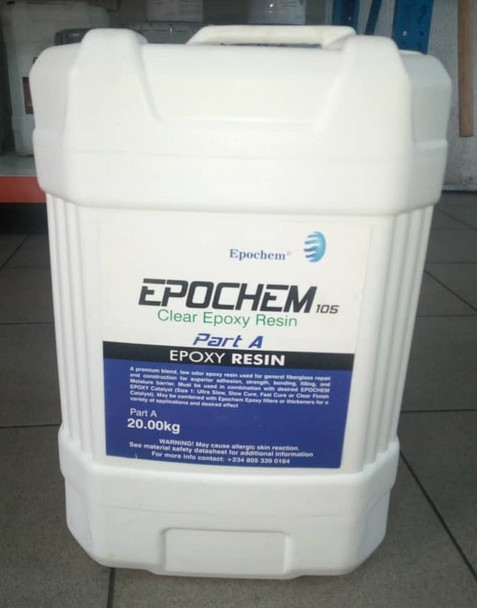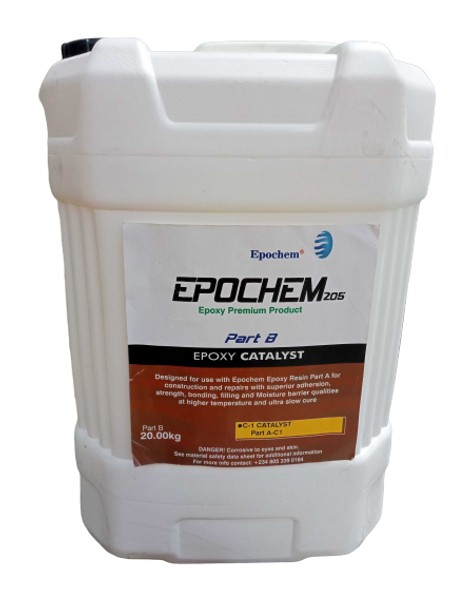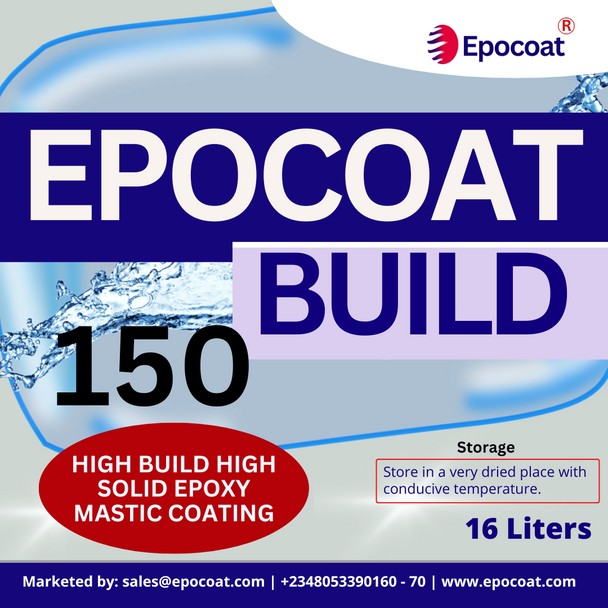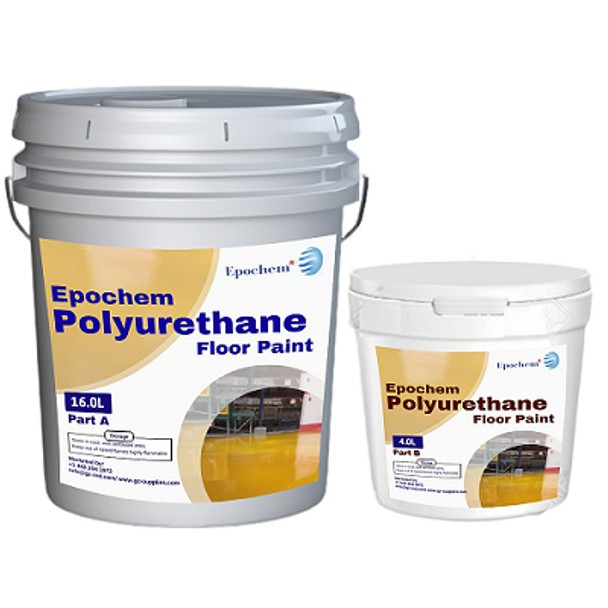Epoxy vs. Polyurethane Flooring: Which is Best for Your Space?
Key Takeaway
- Epoxy flooring is highly durable, chemical-resistant, and ideal for industrial and high-traffic areas.
- Polyurethane flooring is more flexible and UV stable, making it better suited for areas exposed to sunlight.
- Epoxy is harder and more rigid, while polyurethane offers better impact and scratch resistance.
- The choice between epoxy and polyurethane depends on the specific environmental conditions and performance needs of your space.
Introduction
When it comes to flooring solutions for industrial, commercial, or even residential spaces, epoxy and polyurethane are two popular choices. Both offer distinct benefits, and choosing the right one for your space can greatly impact durability, aesthetics, and maintenance.
When choosing between epoxy and polyurethane flooring, the best option depends on the specific needs of your space. Epoxy flooring is known for its durability and resistance to chemicals, making it ideal for industrial settings and high-traffic areas like warehouses and factories. Tools and equipment for epoxy flooring installation include epoxy resin, hardener, mixing paddles, rollers, and squeegees for smooth application.
On the other hand, polyurethane flooring offers superior flexibility and UV stability, which makes it more suitable for areas exposed to direct sunlight, such as outdoor spaces or parking garages. Installing polyurethane requires similar tools, such as polyurethane resin, catalyst, mixing containers, and rollers, but it generally provides better impact resistance and elasticity than epoxy. Ultimately, the choice depends on factors like exposure to chemicals, sunlight, or the level of foot traffic.
This guide will compare epoxy and polyurethane flooring, detailing their advantages, disadvantages, and key differences to help you make an informed decision.
Epoxy Resin Epochem 105, 20kg keg
What is Epoxy Flooring?
Epoxy flooring is created by mixing epoxy resin with a hardening agent, forming a rigid, durable, and smooth surface. The mixture cures to become a solid, robust layer that can withstand heavy loads and resist chemicals, making it a preferred choice for industrial and commercial applications.
Applications and Uses
Epoxy flooring is commonly used in:
1. Garages and workshops
2. Warehouses and manufacturing facilities
3. Healthcare facilities and commercial spaces requiring a seamless and hygienic surface
Advantages of Epoxy Flooring
1. Durability and Strength: Epoxy floors are known for their toughness. They can support heavy loads, making them suitable for environments where machinery or vehicles are present.
2. Chemical Resistance: Epoxy flooring is highly resistant to chemicals, oils, and other hazardous substances, which makes it ideal for manufacturing and automotive facilities.
3. Cost-Effectiveness: Epoxy flooring is generally affordable, especially considering its longevity and durability.
4. Easy Maintenance: Once installed, epoxy floors are easy to clean and maintain, as their seamless nature prevents dirt and debris from getting trapped.
Disadvantages of Epoxy Flooring
1. UV Damage: One of the main drawbacks of epoxy flooring is its vulnerability to UV light. When exposed, it may yellow or fade over time, making it less suitable for outdoor spaces.
2. Hardness and Brittleness: While epoxy is strong, it lacks flexibility, making it prone to cracking under heavy impact or in environments with fluctuating temperatures.
3. Longer Curing Time: Epoxy floors often require more time to cure fully, sometimes taking several days before they are ready for use. This could be a drawback for businesses needing quick turnaround times.
Epocoat Hardtop GX (Polyurethane Marine Paint)
What is Polyurethane Flooring?
Polyurethane flooring is made from a synthetic material that forms a flexible and resilient surface when cured. It has a softer texture compared to epoxy, which provides greater elasticity and impact resistance.
Applications and Uses
Polyurethane flooring is commonly used in:
1. Commercial kitchens and food processing plants
2. Laboratories and pharmaceutical facilities
3. Retail spaces and areas exposed to temperature extremes or high traffic
Advantages of Polyurethane Flooring
1. High Flexibility and Resilience: Polyurethane is more flexible than epoxy, which allows it to absorb impacts without cracking. This property makes it a great choice for environments that experience temperature fluctuations or heavy foot traffic.
2. UV Stability: Unlike epoxy, polyurethane flooring is resistant to UV damage. It doesn’t yellow or fade, making it suitable for outdoor applications and spaces with direct sunlight exposure.
3. Temperature Resistance: Polyurethane’s flexibility allows it to perform well in extreme temperature conditions, making it suitable for cold storage areas or kitchens where temperatures fluctuate.
4. Quick Curing Time: Polyurethane floors cure faster than epoxy, reducing downtime and making it a preferable option when time is a critical factor.
Disadvantages of Polyurethane Flooring
1. Higher Cost: Polyurethane flooring tends to be more expensive than epoxy, both in terms of material and installation costs. This may be a factor for budget-conscious projects.
2. Requires Skilled Installation: Installing polyurethane flooring can be more complex and typically requires experienced professionals to ensure a proper and durable finish.
3. Not as Strong Under Heavy Load: While polyurethane is flexible, it may not be as strong as epoxy when subjected to extremely heavy loads, making it less ideal for spaces where machinery or vehicles are used extensively.
Epoxy Catalyst, Epochem 205, 20kg keg
Key Differences Between Epoxy and Polyurethane Flooring
1. Durability and Strength
Epoxy flooring is generally stronger and more rigid, making it suitable for heavy-duty applications where high load-bearing capacity is essential. Polyurethane, however, offers superior flexibility and impact resistance, which is advantageous in environments where physical stress or temperature variations occur.
2. Flexibility and Elasticity
Polyurethane is more flexible than epoxy, which helps it absorb impacts without cracking. This elasticity is particularly beneficial in environments with temperature changes, as it expands and contracts without damage. Epoxy, being harder and more brittle, is better for static, heavy-duty settings but less adaptable to stress.
3. Chemical and UV Resistance
Epoxy excels in environments with chemical exposure but is prone to UV damage, making it less suitable for outdoor applications. Polyurethane, conversely, has excellent UV stability and is better for spaces exposed to sunlight or those requiring a versatile surface that can handle both chemical exposure and temperature changes.
4. Aesthetic Differences
Both flooring types offer various aesthetic finishes, such as glossy and matte. Epoxy typically provides a high-gloss, smooth surface that can enhance the brightness of a space. Polyurethane, on the other hand, can offer more matte or satin finishes, providing a different aesthetic option and UV-resistant colors for outdoor use.
5. Installation Process
The installation of epoxy flooring generally involves more preparation and a longer curing time compared to polyurethane. Polyurethane floors cure faster and may require less downtime, but they demand greater expertise during installation.
Cost Comparison
1. Epoxy Flooring: Generally, epoxy flooring is more cost-effective, especially for large areas that need a durable, long-lasting surface. The lower initial installation cost makes it appealing for many businesses and homeowners. However, it may incur higher maintenance costs over time, particularly if used in environments where UV exposure or temperature fluctuations are common, leading to damage.
2. Polyurethane Flooring: Although polyurethane flooring is initially more expensive, it offers lower long-term maintenance costs due to its UV resistance and flexibility, which help it withstand cracking and discoloration. The higher upfront investment might be justified in settings that demand resilience to extreme conditions.
EPOCOAT BUILD 150 (HIGH BUILD HIGH SOLID EPOXY MASTIC COATING)
How to Choose the Best Flooring for Your Space
1. Assessing the Environment
When selecting between epoxy and polyurethane, it’s crucial to evaluate the environment where the flooring will be applied. For indoor environments like factories and garages, where heavy machinery is used, epoxy is a suitable choice due to its hardness and chemical resistance. In contrast, polyurethane flooring works better in environments exposed to sunlight, extreme temperatures, or high humidity levels, such as outdoor spaces, commercial kitchens, or laboratories.
2. Usage and Traffic Considerations
High-traffic areas, like retail spaces and commercial kitchens, benefit from the flexibility and impact resistance of polyurethane flooring. Its resilience makes it less likely to crack under the stress of constant foot traffic or heavy items being dropped. Epoxy, while strong, may not handle such dynamic environments as well, especially if there are frequent temperature fluctuations.
3. Budget Constraints
If budget is a key concern, epoxy flooring can be a cost-effective solution, especially for spaces with limited exposure to temperature variations and UV light. For projects with higher budgets or those requiring a longer-lasting, flexible solution, polyurethane might be the better investment despite its higher initial cost.
4. Aesthetic Preferences
Epoxy flooring is great for spaces that prioritize a glossy, reflective finish that enhances lighting. It also offers a wide range of colors and decorative options, including metallic effects and custom designs. Polyurethane flooring is ideal for those preferring a more matte or satin finish, along with UV-stable colors for outdoor applications or spaces exposed to natural light.
Case Studies or Real-Life Examples
1. Warehouse Flooring (Epoxy)
A large warehouse facility opted for epoxy flooring due to its durability and strength. The ability to handle heavy machinery and forklifts without damage was essential. Additionally, the warehouse's controlled indoor environment meant UV exposure was not a concern, making epoxy the perfect choice for a cost-effective, long-lasting solution.
2. Commercial Kitchen (Polyurethane)
A commercial kitchen installed polyurethane flooring because of its ability to withstand temperature fluctuations, spills, and constant foot traffic. Its quick curing time was also a crucial factor, as the business needed to minimize downtime during renovations. The kitchen’s exposure to cleaning chemicals was another reason polyurethane was chosen, as it offers strong chemical resistance and easy maintenance.
Epochem Polyurethane Floor Paint
Frequently Asked Questions
1. Can epoxy and polyurethane be used together?
Yes, epoxy and polyurethane can be combined in some applications. Epoxy can be used as a base layer for strength and durability, while polyurethane serves as a topcoat for UV resistance and flexibility. This combination allows you to leverage the strengths of both materials.
2. How long do epoxy and polyurethane floors last?
Epoxy floors can last 10–20 years, depending on usage and maintenance, while polyurethane floors typically last 15–25 years, especially in environments where their flexibility and UV resistance offer added protection.
3. Can these floors be repaired if damaged?
Yes, both epoxy and polyurethane floors can be repaired. Epoxy repairs often involve patching or recoating, while polyurethane may require a professional to apply a new layer to restore its surface. Proper maintenance and addressing issues early can extend the life of both types.
4. What are the maintenance requirements for each type?
Epoxy floors are generally easy to clean with mild detergents and regular sweeping. However, they may need occasional recoating, especially if exposed to UV light. Polyurethane floors require similar maintenance but are less prone to discoloration and cracking, reducing the need for frequent touch-ups.
5. Are epoxy and polyurethane floors slip-resistant?
Both flooring types can be made slip-resistant by adding textured aggregates or anti-slip coatings during installation. This is particularly useful for areas exposed to moisture, such as commercial kitchens and outdoor spaces.
Related Articles
HOW LONG DOES EPOXY FLOOR LAST
Epoxy Flooring: Benefits and Uses in Modern Spaces
Readers also Watched...
Conclusion
Choosing between epoxy and polyurethane flooring depends on several factors, including the environment, usage, and budget. Epoxy flooring is an excellent option for heavy-duty applications requiring strength, durability, and chemical resistance, particularly in indoor settings like warehouses, garages, and industrial facilities. On the other hand, polyurethane is more flexible and UV-resistant, making it ideal for areas exposed to temperature changes, sunlight, or high foot traffic, such as commercial kitchens, outdoor spaces, and retail environments.
By considering these factors, you can determine which flooring option is best suited to your needs. Consulting with a professional is recommended to ensure that the flooring type you choose meets the specific requirements of your space.
If you are considering epoxy or polyurethane flooring for your space, consult with experts to ensure you choose the best option for your needs. GZ Industrial Supplies offers a range of high-quality flooring solutions and professional installation services to meet your requirements. Visit GZ Industrial Supplies today to explore your options and get started!
Recent Posts
-
Hand Tool Essentials for General Contractors in 2025
The construction industry in 2025 is evolving at a rapid pace, driven by technological advancements …Feb 22, 2025 -
How Inverter Batteries Contribute to Uninterrupted Industrial Operations
Introduction Inverter batteries play a crucial role in ensuring uninterrupted industrial operations …Feb 20, 2025 -
Expert Tips for Choosing the Best Inverter Battery for Your Industry
Introduction In industries where uninterrupted power supply is crucial, selecting the right inverter …Feb 20, 2025










